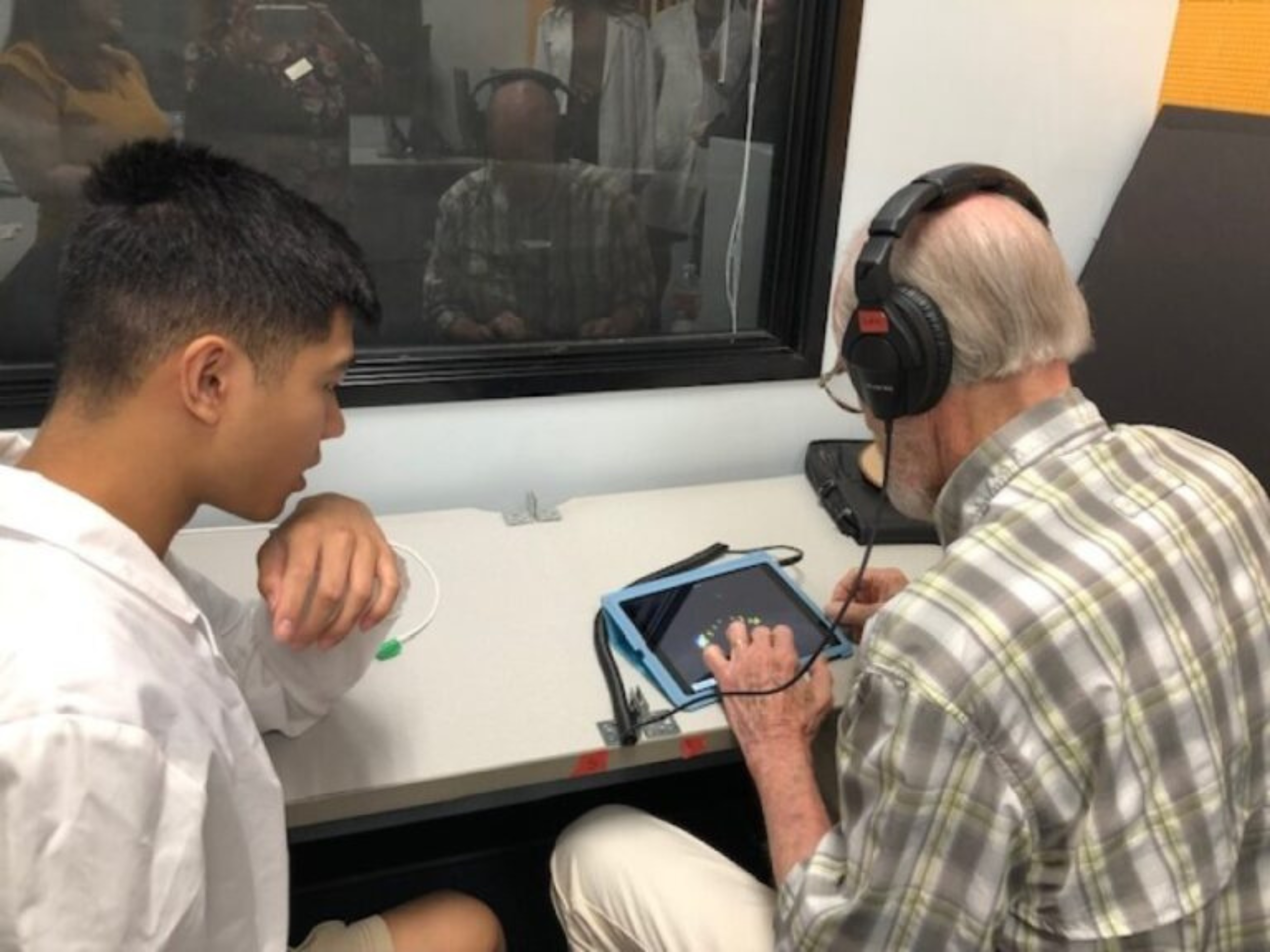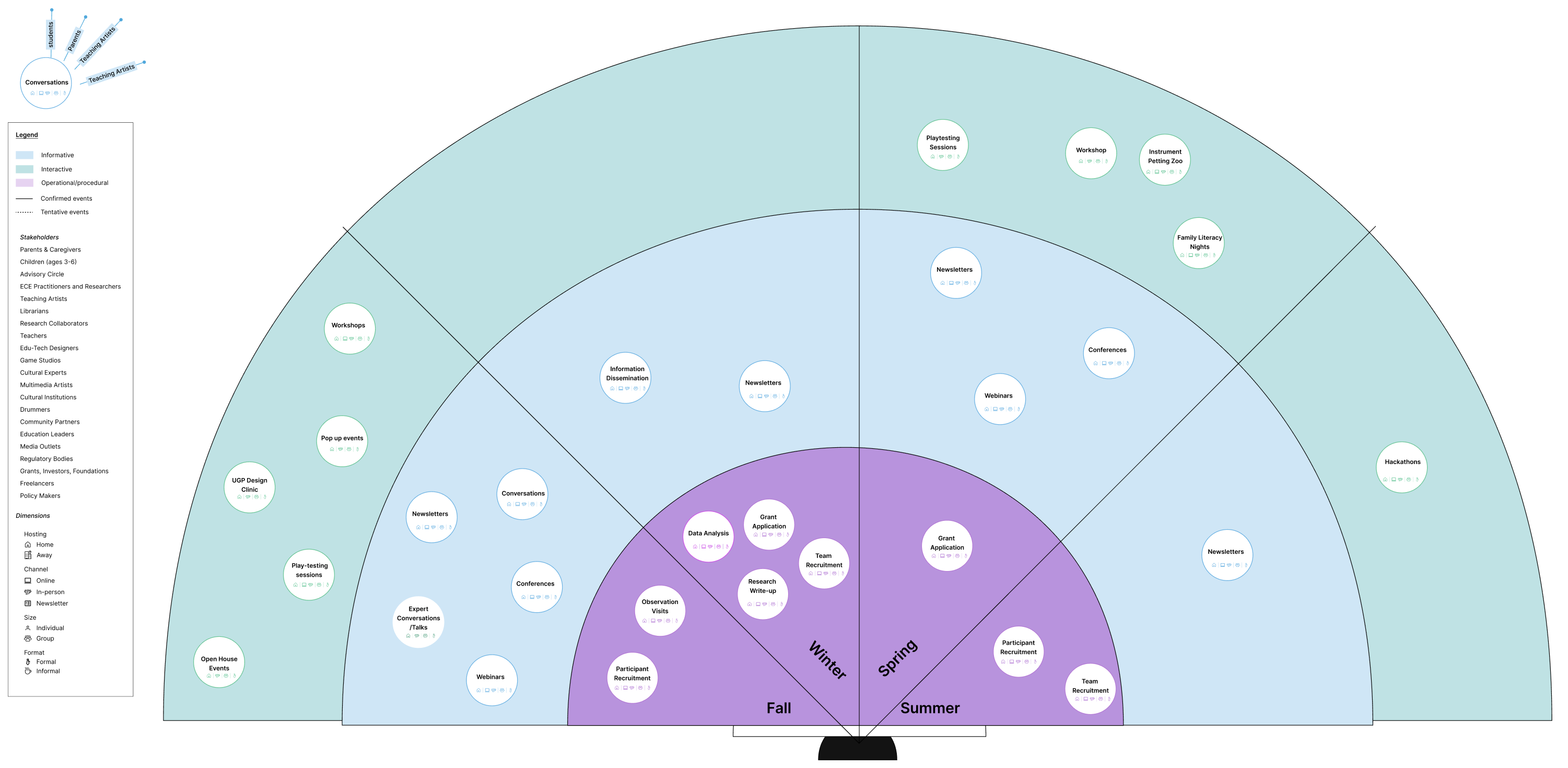Assistant Professsor
College of Arts, Media & Design
Department of Music
Northeastern University
|
The UGP Study is a Culturally Grounded Music-Based Intervention for Cognitive, Language and Socio-Emotional Development Keywords: Early Childhood Education The principal focus of this study is to investigate the affordances of integrating rhythmic multimodal call-and-response strategies in the early learning and play practices of children (ages 3-6) by looking at the residual impacts of this embodied modality on their literacy behaviors, emotional understanding and social participation dispositions from week-to-week. The data collection methods used include: pretest and posttest scores, surveys, participant observation, interviews and audio/video recordings data. These are analyzed to answer the research questions that probe the affordances of integrating multimodal call-and-response strategies facilitated by the Drumball-Alphariddims system on children’s early literacy experiences, by exploring the relationships between embodied literacy learning experiences (or environments), and children's cognitive and socio-emotional growth. Collaborators: NU Center for Design Supported by: College of Arts Media & Design |

|
|
Testing a novel Cognitive Framework for Rhythm focused MBIs to address age-related cognitive declines. Keywords: Rhythm training, cognitive frameworks This proposal seeks to conduct a stage-1 proof-of-concept feasibility study of a Music-based intervention (MBI) focused on rhythm within a cognitive framework. MBIs, including those focused on rhythm, are recognized as important tools for preventing or rehabilitating cognitive functions associated with Alzheimer’s Disease and Related Dementias (ADRD). However, existing MBIs are under-characterized and haven’t been examined within clear cognitive frameworks that explicitly measures cognitive constructs both within the intervention and in the outcomes. For example, while rhythm-focused MBIs, such as tapping or walking to a beat, show promise to improve executive functions and provide real-world benefits, including improved gait, reduced fall risk, better speech intelligibility, and positive effects on mood and well-being, we are unaware of any MBIs targeting rhythm training adhering to the guidelines of the NIH MBI Toolkit, with studies failing to describe in detail their intervention approach, and lack mechanistic approaches, controls, statistical power, and rigorous and replicable methods. We propose an early-stage proof-of-concept feasibility study to determine acceptability, adherence and engagement in two rhythm-based MBIs. Our primary intervention of interest is a novel, cognitively complex rhythm MBI (CC_RMBI) that employs a “naturalistic” approach that explicitly models characteristics found in conversational drumming. Collaborators: UCR Brain Game Center (Aaron Seitz) & Soundmind Collaboratory (Susanne Jaegi) |

|
|
Pathways 2 Impact is a set of design principles and mapping strategies for engaging key stakeholders in co-design encounters to advance research Keywords: Design-based research Stakeholder engagement is increasingly being recognized as a key step in the design and development of design-based research interventions. Interventions implemented through design-based research strategies typically require intentionally designed discovery mechanisms that invite broad participation and opportunities for involvement from key stakeholders (e.g. parents and children, PreK-3rd grade teachers, teaching artists and cultural experts, students, volunteers, as well as partner institutions - libraries, community-based organizations, cultural arts centers etc). By going through the iterative Design Thinking stages of Empathy, Definition, Ideation, Prototyping and Testing, stakeholder feedback is solicited at every step of the process and distilled into principles guiding the design of activity systems, interventions and experiences. This project provides example mapping strategies of stakeholders organized in concentric rings (ordered from highest to lowest influence and color-coded to reflect variable or high levels of interest); as well as seasonal visualizations activity cycles and engagement types for involving stakeholders according to the natural stages and just-in-time needs of the project. Collaborators: NU Center for Design & Community-Engaged Teaching and Research (CETR) |

|
|
Interactive Call-And-Response Visualization and Sonification Tools for Computer-Mediated Communication and Human-Computer Interaction Keywords: Computer-mediated communication
The Alphariddims Code project involves the development of a rhythm grammar for digital drum talk that draws concepts from linguistics, communication theory, musicology and computer science to propose a new paradigm for HCI grounded in the interactional model of drum languages.
Type-3 Grammars, also called Regular Languages, can be constructed through an alphabet of symbols where there is a small set of production rules.
Regular expressions are almost like writing sentences that build up from other components. Anything that is a terminal would be a word. Something can resolve to a terminal or a terminal plus another word.
We are designing, applying and evaluating interactive visualization and sonification tools to help preschool/kindergarden children and their caregivers communicate via rhythm.
The Common Core State Standards (National Governors Association Center for Best Practices & Council of Chief State School Officers, 2010) state that the expectations for first graders are to develop foundational skills, engage with key ideas in text, conduct collaborative conversations, and eventually analyze text structures.
Listen to Alpha Riddims [HAS SOUND] |

|
Developing a tangible digital orality hypermedia system for rhythmic communication
Developing an audio communication protocol to support isochronous control for the Internet of Things
Designing a culturally-grounded rhythm-based game ecology for early literacy and STEAM learning
Designing a multimodal learning kit to improve parent-child technology interactions
Telemetric web architecture for in-game multi-literacy assessment: Validation in a young adult population